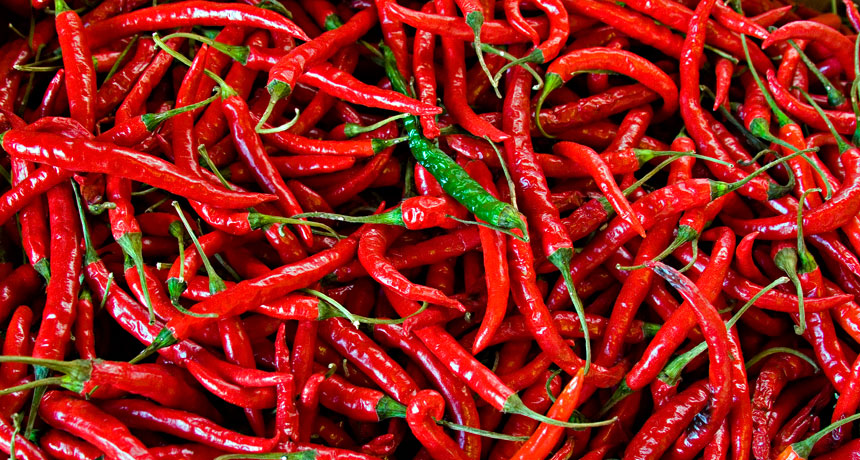HOME
The cool science of hot peppers

Shiny green slices of jalapeño pepper adorn a plate of nachos. Chomping into one of those innocent-looking chilies will make a person’s mouth explode with spicy fireworks. Some people dread and avoid the painful, eye-watering, mouth-searing sensation. Others love the burn.
“A quarter of the world’s population eats chilies every day,” notes Joshua Tewksbury. He is a biologist who spent 10 years studying wild chili peppers. He also happens to enjoy eating hot, spicy food.
Chili peppers do much more than burn people’s mouths. Scientists have discovered many uses for the chemical that gives these veggies their zing. Called capsaicin (Kap-SAY-ih-sin), it’s the main ingredient in pepper spray. Some people use this weapon for self-defense.
The spray’s high levels of capsaicin will burn the eyes and throats of attackers — but won’t kill people. In smaller doses, capsaicin can relieve pain, help with weight loss and possibly affect microbes in the gut to keep people healthier. Now how cool is that?
News Source